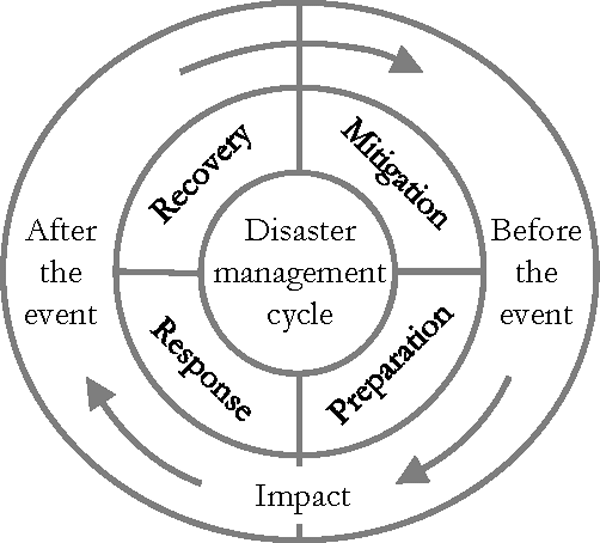Governance
Disaster Management Plan of Ministry of Panchayati Raj
- 19 Mar 2022
- 7 min read
For Prelims: Disaster Management Plan of Ministry of Panchayati Raj (DMP-MoPR), Disaster Management Plan, Disaster Management Act 2005, National Disaster Management Policy 2009, National Disaster Management Authority, Panchayati Raj Institutions
For Mains: Disaster Management Plan of Ministry of Panchayati Raj (DMP-MoPR) and its significance, India's Efforts in Managing Disaster and vulnerability of India
Why in News?
Recently, the Union Minister of Rural Development & Panchayati Raj released the Disaster Management Plan of the Ministry of Panchayati Raj (DMP-MoPR).
What is the DMP-MoPR?
- It has been prepared with a larger perspective of community-based planning starting from Village to District Panchayat level.
- Under the Plan, every Indian village would have a “Village Disaster Management Plan” and every Panchayat would have their Disaster Management Plan.
- The aim is to build disaster resilience at the grassroots level among the Panchayats and establish a framework to align the disaster management measures in rural areas to that of the National Disaster Management Authority.
- It incorporates many innovations in addition to being in compliance with Disaster Management Act 2005, National Disaster Management Policy 2009, and guidelines issued by National Disaster Management Authority.
What will be covered under the Disaster Management Plan?
- It comprehensively covers areas such as:
- Institutional arrangement for Disaster Management.
- Hazard Risk, Vulnerability and Capacity Analysis.
- Coherence of Disaster Risk Management across Resilient Development and Climate Change Action.
- Disaster Specific Preventive and Mitigation Measures-Responsibility Framework.
- Mainstreaming of Community Based Disaster Management Plan of Villages and Panchayats and so on.
What is the Need for such a Plan?
- India has been vulnerable, in varying degrees, to many natural as well as human-made disasters on account of its unique geo-climatic and socio-economic conditions.
- A natural disaster includes earthquakes, floods, landslides, cyclones, tsunami, urban flood, droughts.
- A man-made disaster can be nuclear, biological and chemical.
- Different parts of the country are highly vulnerable to cyclones, floods, droughts, earthquakes, landslides, etc.
What is the Significance of this Step?
- Helpful in Managing Disasters Comprehensively:
- The convergent and collective actions to envision, plan and implement community-based disaster management plans, would be a game changer in managing disasters comprehensively.
- All stakeholders including Panchayati Raj Institutions (PRI), elected representatives and functionaries of Panchayats etc. would participate in planning, implementation, monitoring and evaluation of the plan.
- The involvement of the community is the key factor in any disaster preparedness strategy and active participation of the community is vital to carry out and sustain the activities relating to disaster management in rural areas.
- The convergent and collective actions to envision, plan and implement community-based disaster management plans, would be a game changer in managing disasters comprehensively.
- Ensure Participatory Planning Process:
- This plan would be extremely useful for ensuring a participatory planning process for DMPs which is integrated with Gram Panchayat Development Plan (GPDP) for addressing disasters across the country and initiate a new era of community-based disaster management, convergence and collective action with programs and schemes of different Ministries / Departments.
What are India's Efforts in Managing Disaster?
- Establishment of National Disaster Reaction Force (NDRF):
- India consciously developed DM as a holistic approach, not just reacting after a disaster but also integrating disaster preparedness, mitigation, and Disaster Risk Reduction (DRR) into plans and policies.
- India has increasingly mitigated and responded to all types of disasters, including with the establishment of its National Disaster Reaction Force (NDRF), the world’s largest rapid reaction force dedicated to disaster response.
- India’s Role as a Foreign Disaster Relief:
- India is also an emerging donor that has provided a substantial amount of foreign disaster relief, as well as foreign development assistance, to other countries.
- India’s foreign humanitarian assistance has increasingly included its military assets, primarily deploying naval ships or aircraft to deliver relief.
- In line with its diplomatic policy of “Neighbourhood First,” many of the recipient countries have been in the region of South and Southeast Asia.
- In the last two decades, India has given foreign humanitarian assistance bilaterally to Afghanistan, Bangladesh, Bhutan, Maldives, Myanmar, Nepal, Pakistan, the Philippines, Sri Lanka, and others.
- Contribution to Regional Disaster Preparedness:
- As part of its neighbourhood development efforts, India also contributes to regional disaster preparedness and capacity building efforts.
- Within the context of the Bay of Bengal Initiative for Multi-Sectoral Technical and Economic Cooperation (BIMSTEC), India has hosted DM Exercises that allow NDRF to demonstrate for counterparts from partner states the techniques developed to respond to various disasters.
- Other NDRF and Indian Armed Forces exercises have brought India’s first responders into contact with those from states in the South Asian Association for Regional Cooperation (SAARC) and the Shanghai Cooperation Organisation (SCO).
- Managing Climate Change related Disaster:
- Globally, disasters in the last two decades have predominantly been climate-related disasters, of which floods are the most frequently occurring type of disaster and storms are the second most deadly type of disaster (surpassed by earthquakes).
- India has adopted the Sendai Framework for DRR, the Sustainable Development Goals (2015-2030), and the Paris Agreement on Climate Change, all of which make clear the connections among DRR, Climate Change Adaptation (CCA), and sustainable development.
- India participates in several multilateral organisations that address these and other issues that benefit from multinational coordination.





